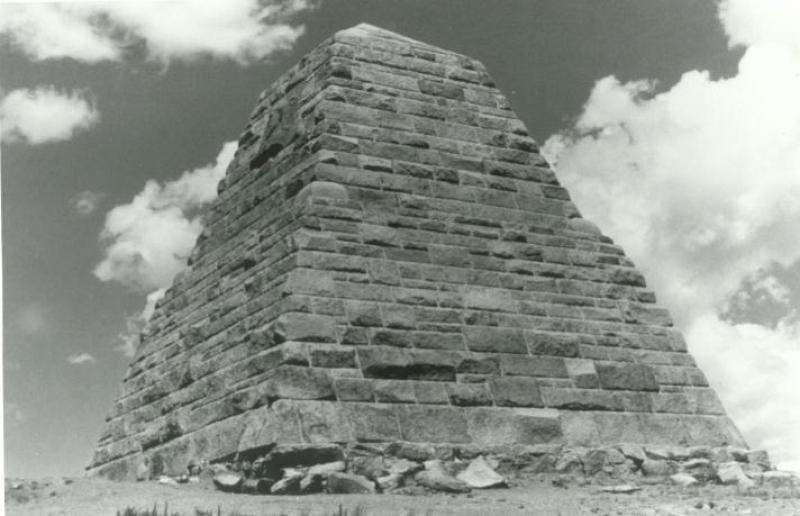
Complete in 1882 at a cost of $65,000, this monolithic, 60-foot high granite pyramid was built by the Union Pacific Railroad Company. It stands on the highest elevation (8,247 feet) of the original transcontinental route. Until 1901, when the railroad was relocated several miles to the south, it passed close by the north side of the monument where once stood the rail town of Sherman, Wyoming. The monument serves as a memorial to the Ames brothers of Massachusetts, Oakes (1804-1873) and Oliver (1807-1877), whose wealth, influence, talent and work were key factors in the construction of the first coast to coast railroad in America. The contribution made by Oakes was especially significant, even though in 1873 he was implicated in a scandal relative to financing the construction of the railroad. The Ames momument was designed by the distinguished American architect Henry Hobson Richardson (1838-1886). The bas-relief medalions of the Ames brothers were done by the prominent American sculptor Augustus Saint-Gaudens. The town of Ames, Iowa, was platted in 1864 by John I. Blair and named after his friend Oakes Ames. (See also: 126.691.1-2)
Citation: 123.673.1-5
Year: 1882